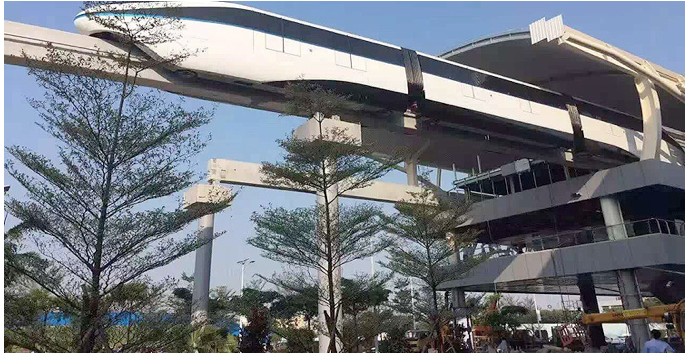CommentsTRANSPORTATION CHOICE-I'm voting "NO" on Measure M for the following reasons:
1) Measure M is like a welfare tax on us with the benefits going to land developers.
If you own property in LA, you paid for the roads. The roads were built by the original developers and the cost was included in the price of the original homes. That cost was passed down to you (at a very inflated price) and you pay property taxes for their up-keep. For at least the last 30 years, the City has been giving your roads away to density-increasing land re-developers free of charge.
Although the City claims it charges developers a "Transportation Impact Assessment Fee,” the City provides many ways for developers to escape such fees, such as allowing them to use Peak congestion Hour Trip Rates as an estimate of the number of commuters added by their projects. This accounts for only 25% to 30% of the actual number. Or exempting all residential development projects using the argument that the City needs to incent developers to build more housing. Yeah, right.
So if developers are not paying their fair share toward the additional transportation infrastructure needed to accommodate the commuters their projects add to an area, why should we?
2) Measure M would fund the wrong type of transit improvements. Since there's no room for new roads, the excess demand created by both past and (assuming it is allowed to continue) future unmitigated density-increasing land development must be accommodated on mass transit. But is "Light" Rail the best solution?
The Expo Line cost $227 million a mile, but it takes an hour to go between Santa Monica and Downtown LA. Why? Because much of it runs at street level and has to slow to 25 MPH at every street crossing. It would have run faster if it was all elevated but that would have cost a lot more because "Light" Rail is still conventional rail, and conventional rail is not light in spite of its name.
Metro should be planning to build all-elevated monorails because they:
- Run much faster than street-level trains and would make the SM to Downtown LA run in 25 minutes vs. 55.
- Run quieter. Monorails run on rubber tires rather than steel-on-steel wheels.
- Are much cheaper to build. It takes 40% less concrete and steel to elevate 15-inch-wide GuideBeams than 8-foot-wide conventional rail beds.
- Are faster to build. The GuideBeams can be built offsite and installed at night.
- Require much less energy to operate. Because Monorails run all-elevated, they can't collide with other vehicles. Therefore monorails are built much lighter than "Light" Rail trains and therefore take much less energy to move. San Diego's General Atomic is developing a frictionless passive-maglev monorail that requires no electricity to elevate after reaching 4 MPH.
- Can't derail in earthquakes. Monorails straddle their track rather than sit on top of it.
- Could be run over the parking lanes of major arterial streets, dipping down to street-level for passenger loading.
- Would not take street space or Left-Turns away from private-vehicle traffic.
There are already close to 50 urban-transit-class monorails running in the world. The Wuppertal Germany monorail ran for over 100 years without a single fatality. "Light" Rail trains kill up to 100 people a year in LA.
Another transit "improvement" to be funded with Measure M's tax revenue is "Bus Rapid Transit." This is the conversion of private vehicle lanes for bus-only use. While this may speed up bus travel, it will reduce the total people movement capacity of the arterial streets where lanes are converted to bus-only use. You don't improve capacity by forcing commuters out of small containers carrying 1 to 2 people that move by every 2 seconds and putting them into large containers carrying 40 to 64 which pass by only every 8 minutes or so. Do the math.
3) Measure M will NOT reduce congestion by 15%. This claim is as bogus as similar claims made to con us into approving the Measure R Sales Tax increase in 2008. For example, Metro's 2008 Long Range Plan (upon which the Measure R tax increase was justified) shows that freeway travel speeds would decline from 34 MPH to 20 MPH by 2030 without Measure R taxes, but would decline to only 23 MPH with Measure R taxes, allowing them to claim that Measure R taxes would decrease congestion by 15% (a 3 MPH increase from 20 MPH.) So Measure M is unlikely to reduce today's congestion by 15%. It may only make future congestion 15% less worse than it will be if the City continues to allow density-increasing land development projects without making their developers fund the infrastructure required to accommodate the additional commuters their projects add to the City.
4) Measure M has no end date. Providing any government agency with an open-ended revenue stream is a license to waste it.
So I'm voting "NO" on any new tax for infrastructure until the above problems are fixed.
(Bill Pope is a former traffic consultant to neighborhood councils. He can be reached as [email protected]) Edited for CityWatch by Linda Abrams.
Explore
Our mission is to promote and facilitate civic engagement and neighborhood empowerment, and to hold area government and its politicians accountable.

 CityWatch Los Angeles
Politics. Perspective. Participation.
CityWatch Los Angeles
Politics. Perspective. Participation.
25
Tue, Nov















